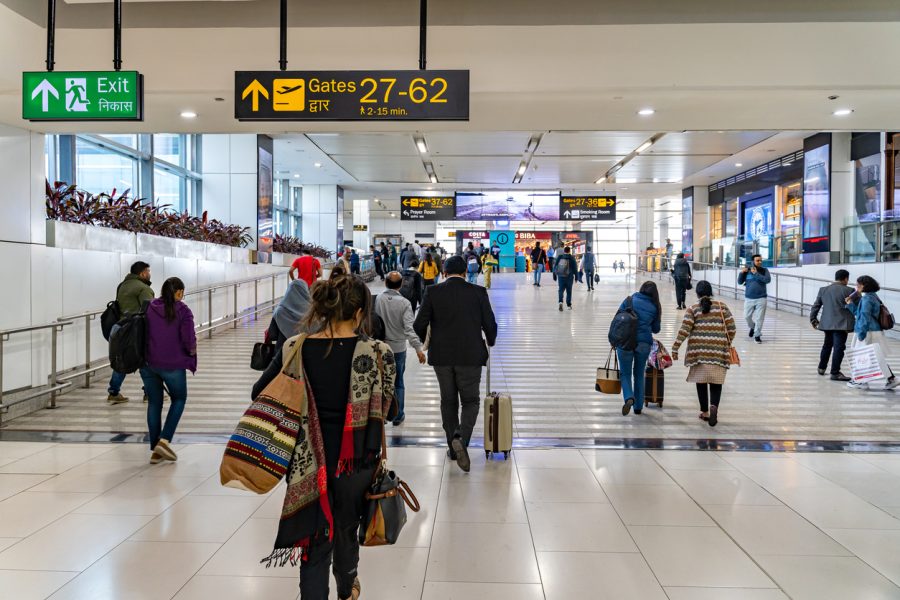
Indian aviation is bleeding; it’s time to roll out Open Skies Policy 2.0
Version 1.0, rolled out in the early 1990s, now needs a massive reset

In recent weeks, spot airfares (those booked for the same day’s flight) have skyrocketed to the point where, in response to opposition party protests, the government was forced to intervene to reverse the trend.
Critics have asserted that charging such high fares constitutes “extortion,” but this phenomenon is destined to recur over time because the increase in spot fares is a symptom of a more fundamental problem in the airline industry. What the aviation industry needs is a second phase of reforms, or Open Skies Policy 2.0. Version 1.0, rolled out in the early 1990s, now needs a massive reset.
Also read: Paris Airshow: Indian carriers likely to shop big, but that’s the easy part
2019 vs 2023
A few years ago, the industry observed the opposite of what one is witnessing now: galloping airfares. Known as “fare inversion,” it was triggered by the decline in air traffic in 2019. The spot fares on key routes plummeted to levels well below the norm. However, there was one similarity between 2019 and 2023: in 2019, Jet Airways ceased operations, and in 2023, GoFirst filed for bankruptcy, grounding all its flights.
But this is where the similarities cease. In 2019, following the departure of Jet Airways from the skies in April, the industry’s fleet size went down to approximately 530 aircraft. Quite obviously, this led to an increase in airfares as demand exceeded supply.
But by September, the capacity had increased to more than 600 aircraft, while the demand had not kept pace, likely due to the significant increase in fares earlier. This near-panic situation compelled a few airlines to implement “flash sales” between 0 and 15 days before the departure of flights to offer significantly discounted airfares.
Two factors occurred as a result of this exercise. While the passenger load factor (PLF: this metric gauges how many seats are occupied during a flight) and market share grew substantially, almost all the players began incurring greater losses.
Government intervention
Despite the fact that the circumstance in 2023 is quite the opposite of 2019’s, the industry continues to face major headwinds. As almost all airlines, with the exception of IndiGo, are in the negative, one of the reasons for higher spot fares is evidently that the players want to capitalise on the limited opportunity they have to earn money.
While the government and other stakeholders left airlines to fend for themselves in 2019, the Centre was forced to rein in industry players in 2023 due to skyrocketing fares. While domestic air travel experienced a significant decline in 2019, there is a near-manic demand for air travel in 2023, leading to a 36 per cent increase in air traffic growth.
Also read: Go First bankruptcy: 9 policy changes that can provide tailwinds to Indian aviation
Clearly, there is more demand than the airlines can meet, and as a result, the industry players are in a happy place. However, they are nowhere near posting profits and far from wiping out accumulating losses until a number of factors play out.
New reforms
Firstly, intermittent government intervention will not address the industry’s deeply rooted problem. The aviation industry needs a second phase of liberalisation.
These might consist of:
- Market competition: The government can promote healthy competition in the airline industry by ensuring a level playing field and preventing anti-competitive practices. This can be achieved through regulatory oversight, transparent policies, and fair market regulations.
- Massive financial support: The government can provide financial assistance to regional players through measures such as subsidies, low-interest loans, or tax incentives. This support can help airlines manage operational costs, like airport landing charges. What is also needed are secondary airports in metros exclusively for regional players.
- Policy reforms: The government can initiate policies to create mia more conducive environment for the airline industry. This can include streamlining regulations, reducing bureaucratic red tape, implementing business-friendly policies to encourage investment and growth and hiring professionals to manage the Ministry and the various government bodies.
- Infrastructure development: Enhancing airport infrastructure is crucial for the growth of the aviation sector and building new airports in underserved regions, and improving air traffic management systems.
- Skill development: The government can invest in skill development programmes to address the shortage of trained aviation professionals. By collaborating with industry stakeholders and educational institutions, the government can ensure the availability of skilled manpower, which is vital for the smooth functioning of domestic airlines.
- Bilateral agreements: Negotiating favourable bilateral air service agreements with other countries can enhance international connectivity for Indian airlines. These agreements can provide more flight slots, expand route networks, and facilitate code-share agreements, benefiting domestic and international operations.
- Research and development: Encouraging research and development in the aviation sector can lead to technological advancements, fuel efficiency, and cost reduction.
- Safety and security: Ensuring passengers’ safety and security is paramount. The government should continue to prioritise aviation safety standards, invest in modern security measures, and strengthen regulatory bodies to maintain a safe and secure environment for air travel. A separate fund to help innovations like e-planes would ensure that the country takes a lead in such industry-disrupting technologies.
- Aircraft leasing: The government should ensure that leasing companies can repossess airlines’ aircraft as smoothly as leasing them out to domestic airlines. The immediate fallout of this measure will be that it will lead to a drop in leasing charges for domestic players.
Also read: Bilateral access may prove contentious for airlines, airports as new facilities sprout
It is imperative to recognise that intermittent interventions alone will not suffice. A comprehensive and forward-looking approach is essential to address the industry’s deep-rooted problems and create avenues for more players to enter the industry. Open Skies Policy 2.0 represents an opportunity to reinvigorate the industry, empower regional players, and enhance domestic and international connectivity.

